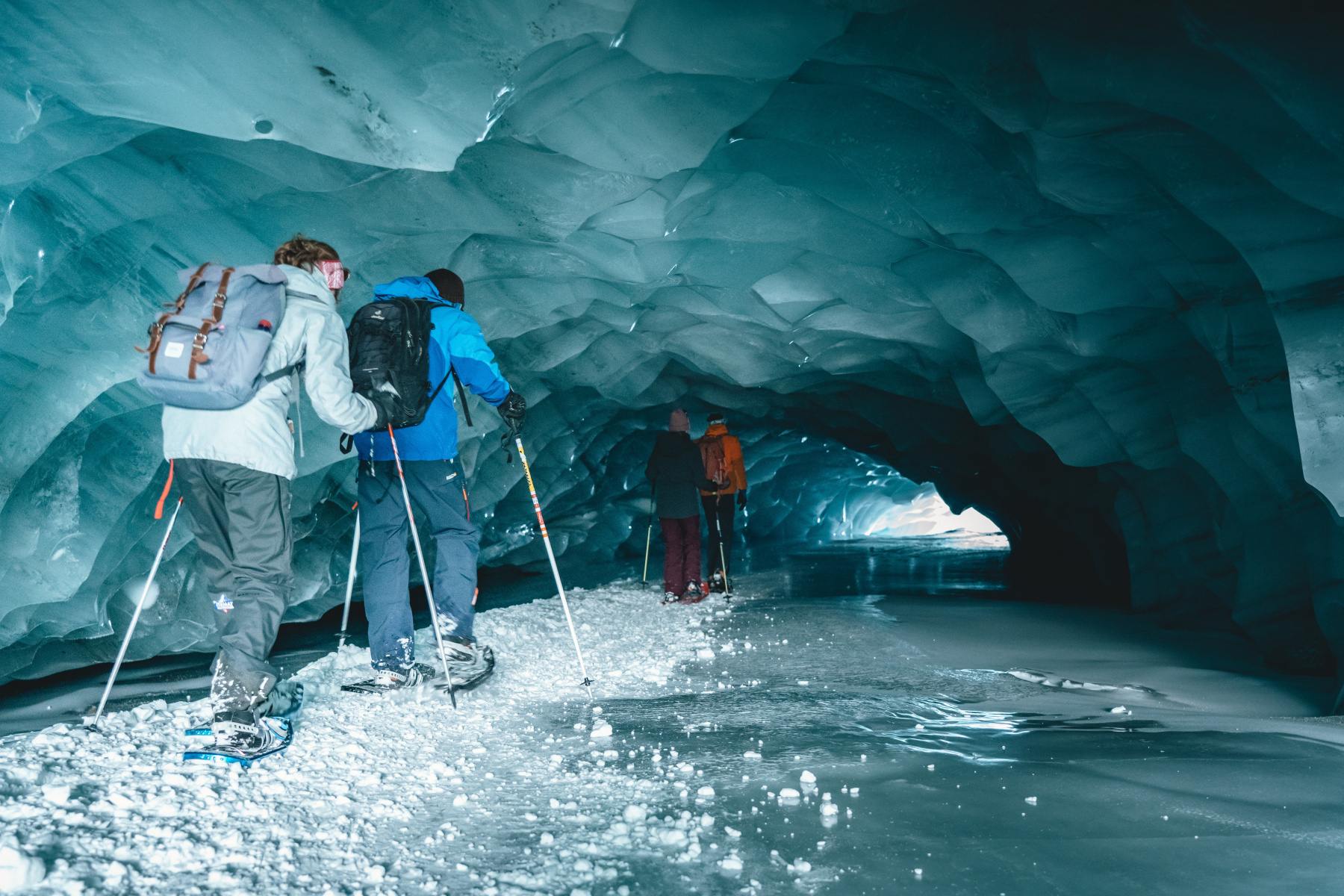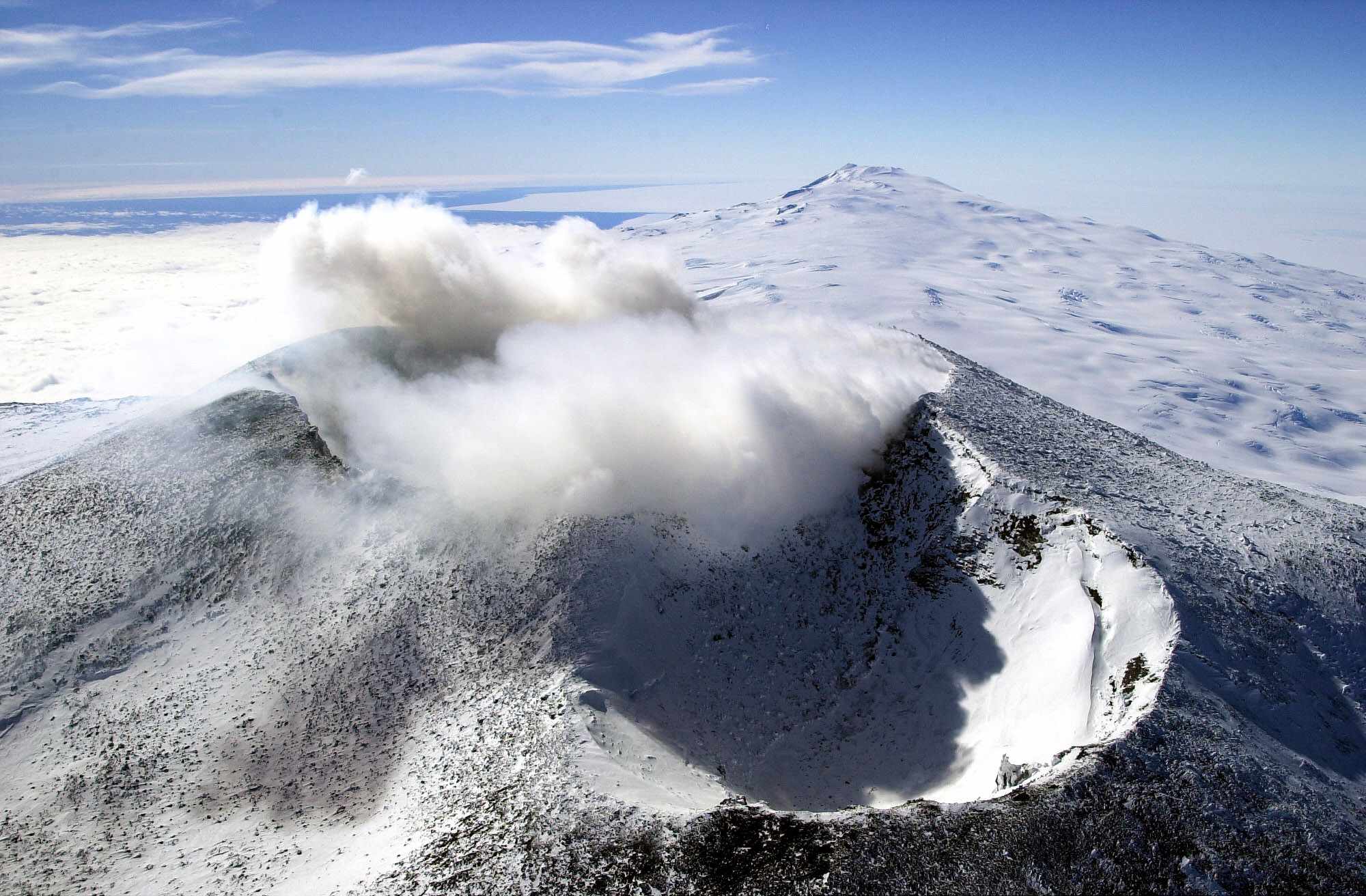Antarctica is known for its harsh and frigid environment, with temperatures dropping far below freezing. However, what lies beneath the ice may surprise you. In September 2017, scientists revealed that there may be a secret world of animals and plants living in warm caves under Antarctica’s glaciers.

These caves have been formed by the heat generated by active volcanoes underneath the ice, creating an oasis in the frozen landscape. This discovery has sparked excitement among scientists as it suggests that there may be unknown species living in a place where life was thought to be impossible.
Mount Erebus is Antarctica’s second-highest active volcano, after Mount Sidley, and the southernmost active volcano on Earth. With a summit elevation of 3,684 meters, it is located on Ross Island, an island formed by four volcanoes in the Ross Sea. It has been active for around 1.3 million years.

The caves, hollowed out by steam from that volcanoes, are light and could reach temperatures of 25 degrees Celsius (77° F), researchers said, raising the possibility of a whole ecosystem of flora and fauna deep beneath the frozen surface.
These caves were explored during an extensive study led by the Australian National University. Forensic analyses of soil samples from the caves revealed intriguing traces of DNA from algae, mosses, and small animals. While most of the DNA was similar to mosses, algae, and invertebrates found elsewhere in Antarctica, not all sequences could be fully identified.
Among the unidentified DNA recovered at the volcanic sites, the closest match the scientists could find are arthropods. This category of animals features external shells and jointed limbs and includes over a million known species, ranging from lobsters to centipedes to microscopic copepods.
Arthropods have been found elsewhere on the Antarctic continent, including on patches of exposed ground that make up the mere 0.3 percent (or less) of Antarctica that is not covered with ice. In these regions, life has to contend not only with extreme cold but also with extreme dryness. Even though much of the continent is coated in ice that is up to 3 miles (5 kilometers) thick in parts, Antarctica’s inner regions receive an average of only 2 inches (5 centimeters) of precipitation – primarily snow – each year.
But despite the harsh conditions that exist away from its coast, Antarctica hosts vast biomes under the ice that scientists are still exploring.
“We think of Antarctica as a wasteland,” said lead researcher Ceridwen Fraser. “But even in that extreme environment life thrives in amazing places – on rocks on top of mountains, in the lower layers of sea ice, in dry ‘deserts’ – why not also in these warm, hospitable caves hollowed out by steam between the ice and the rock?”
In East Antarctica, Lake Vostok is buried under 2.3 miles (3.7 kilometers) of ice and hasn’t been near open air for some 15 million years. Samples taken from the lake in an unrelated study yielded genetic sequences for 3,507 recognizable species, according to a 2013 study, as well as about 10,000 species not yet known to science. Scientists have also found hardy forms of bacteria within networks of salty liquid water discovered at Antarctica’s McMurdo Dry Valleys, which feature striking, blood-red falls of iron-rich outflow.
The DNA discoveries at Mount Erebus may only represent a fraction of the diverse life housed within its volcanic ice caves. Antarctica is home to more than 100 volcanoes, each of which may host its own network of ice caves and tunnels.
In conclusion, Antarctica may be difficult to get to and explore, but there are even more challenging places. Many scientists believe understanding the life and its subsurface environs in the harsh climate of Antarctica could lend clues to possible life on places in even more extreme locations – like Mars.
The study originally published on the journal Polar Biology. August 17, 2017.




